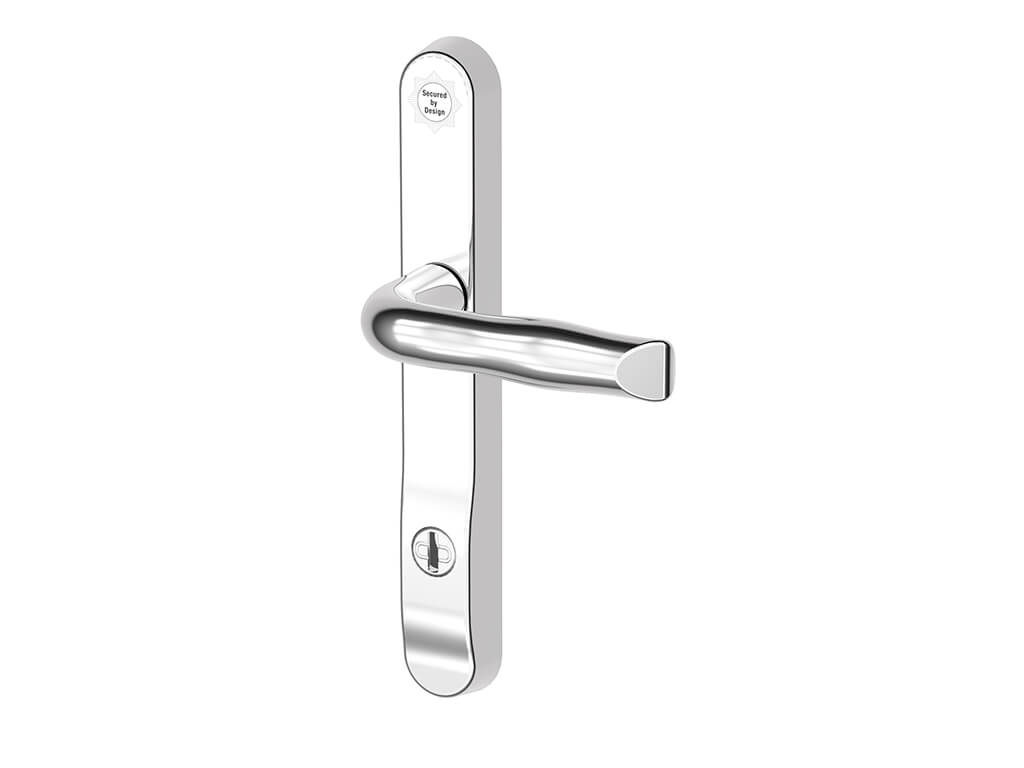
Take two stainless steel handles – they both function and they both look very similar. But, in my experience, underneath, they can actually be as different as two pieces of furniture – one which is crafted from a piece of solid oak timber sawn, planed and sanded into shape, dove-tail jointed and lovingly waxed and the other produced from a chipboard veneered material, butt jointed and mechanically fixed.
It doesn’t take a design expert to work out which one of these will still be functioning and look the same after five years, never mind 25 – and it’s very much the same case with stainless steel hardware.
In recent years, stainless steel has become the ‘must have’ product in the doors market to protect against corrosion and of course to match the high end premium composite, timber and aluminium doors which are becoming so popular with homeowners looking to give their properties an instant visual upgrade.
Most people will already know that there are various grades of stainless steel – 202, 430, 304 and 316 – each with better corrosion resistance than the previous. Mila uses only 304 and 316 for externally fitted hardware, for example.
However, people may be less aware that the corrosion resistance and performance of stainless steel hardware owes just as much to its design and construction as it does to the grade of material selected.
A manufacturer whose design is driven by a cost base rather than by a ‘user centred’ approach focused around homeowners’ aspirations in terms of quality, strength, style, finish and security will, in my opinion, inevitably deliver an inferior result.
In stainless steel terms, the cost vs quality debate is even more stark because, almost by definition, stainless steel is a premium option chosen by customers who have prioritised quality and durability.
In developing Mila’s new Supa stainless steel range, our product design team started with the material itself and the materials processing required, since these have such a big impact on all of the other design variables such as form, function, application, ergonomics, service life and environmental impact.
Using only 304 or 316 grade material, our user centred approach meant we’ve opted for an investment casting or ‘lost wax’ process as it is also commonly known. This is effectively an ancient process that has been brought into the modern age. It is used in many industries from aerospace to jewellery and can produce everything from very small components to huge castings.
We chose it because it produces components with extremely high shape definition, superior strength and superior surface quality – all crucial for hardware.
Investment casting works by creating a basic casting shape from a mould that produces a wax pattern. These patterns are then assembled onto a central wax column and this column goes through a series of repeated dipping steps where a ceramic material (investment) is added in layers and left to dry. The wax pattern is then removed via a melting process in an autoclave and dried out at extremely high temperature. The molten stainless steel is poured into this cast and, once solidified, the investment shell is removed.
Secondary processes then come into play such as machining, grinding and polishing to leave a superior Mila Supa casting of the highest quality with no short cuts or compromises.
Compare this with the cost driven approach which we’ve seen in stainless steel hardware components from some other suppliers. Here, it’s all about producing something which may give the appearance of a quality stainless steel product but which just uses standard production processes driven by the needs of the factory and not the end-user.
These often have poor production tolerances which mean that, when the product becomes a whole, it just does not have the inherent quality feel which is required. I’m seeing products made using thin gauge sheet stainless steel simply pressed to shape and others formed and assembled over a cheaper, mild steel sub-frame. It’s obvious that the corrosion resistance and security levels won’t be the same as a Mila Supa product and the quality, security and long term durability will leave the customer disappointed and the fabricator or installer facing remedial issues.
In contrast, we are so confident about the quality of Mila’s Supa stainless steel range that we provide a 25 year guarantee and, because we have such an efficient manufacturing and supply chain, rest assured the products also come at a surprisingly affordable price.


